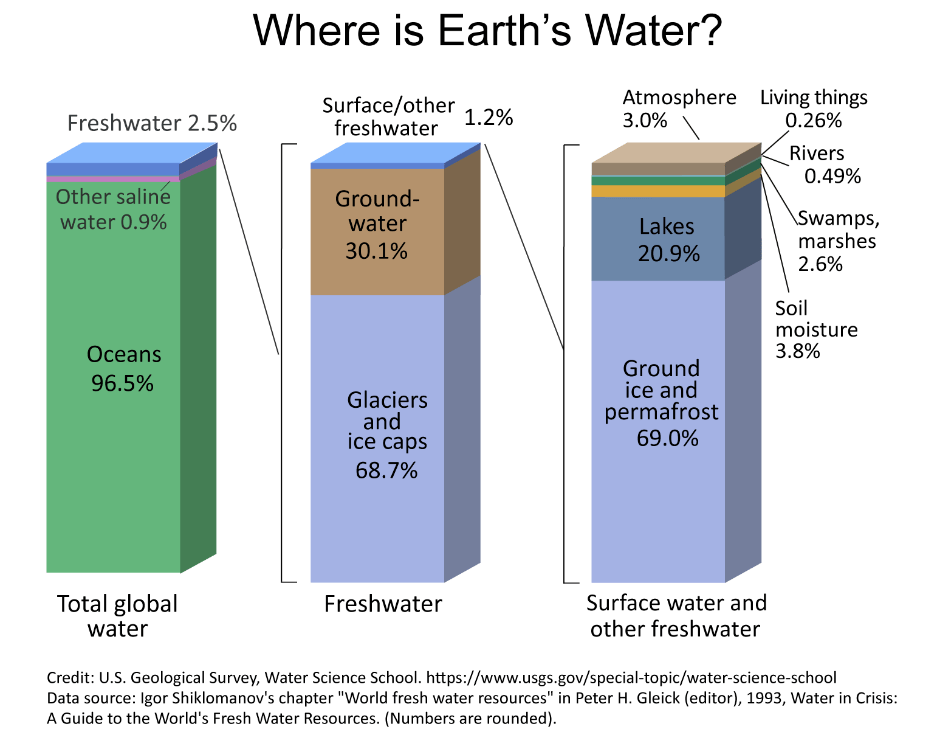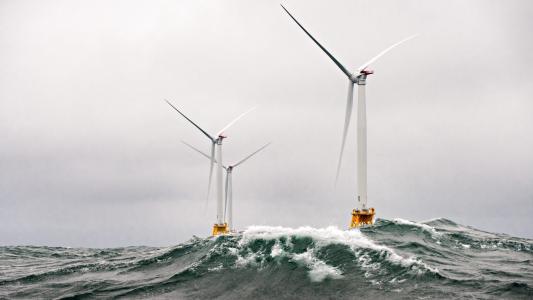Billions of people turn on a tap and expect clean drinking water to flow out, but this is not the reality for billions of others.
Rapid population growth, urbanization and increased global water consumption by agriculture, industry and energy have left a growing number of countries facing the threat of water scarcity.
One solution to meet the growing demand for freshwater is desalination, which involves removing the salt from seawater to produce drinking water.
While this process alone can’t prevent a global water crisis, it can play a vital role in providing more people around the world with access to clean, safe drinking water.
A future water crisis
Water scarcity occurs when water demand outstrips available supply during a specific period – when water infrastructure is inadequate or institutions fail to balance people’s needs.
In 2022, 2.2 billion people lacked safely managed drinking water, including more than 700 million people living without a basic water service, according to the United Nations.
By 2030, there could be a 40% global shortfall in freshwater resources, which combined with world population growth that’s set to increase from 8 billion today to 9.7 billion by 2050, would leave the world facing an extreme water crisis.
Sub-Saharan Africa is expected to see the biggest change in water demand, with a projected 163% increase by mid-century, World Resources Institute data shows. This is four times the expected rate of change in Latin America, the second-highest region.
Almost two-thirds of the planet’s surface is covered with water, and our oceans hold 96.5% of all water on Earth. However, its salt content makes this water unsuitable for humans to drink. This is where desalination comes in.

Types of desalination
There are a number of different methods of desalination, but most work either by a process of reverse osmosis or multistage flash to remove the salt from seawater.
Reverse osmosis is the more efficient of these two methods. The process uses a special membrane acting as a filter, which blocks and removes salt from seawater as it passes through. Here, powerful pumps generate enough pressure to ensure pure water is extracted.
Multistage flash desalination doesn’t use a filter. Instead, saltwater is exposed to steam heat and pressure variations, which causes a portion of the water to evaporate – or “flash” – into water vapour or freshwater, leaving behind salty brine as a by-product.
Both desalination processes create brine containing high salt levels, which can pose a threat to marine ecosystems when released back into natural bodies of water.
The output of both methods is clean drinking water. But, in addition to removing salt, the desalination process also removes organic or biological chemical compounds so the water produced doesn’t transmit diarrhoea or other diseases.
Wave-powered innovation
While reverse osmosis plants are more efficient than multistage flash plants, large-scale desalination plants require a lot of energy and maintenance, and are expensive to build and operate.
A number of innovative desalination systems are being developed to try and reduce the energy required to operate them and related emissions.
Oneka, a wave-powered desalination technology, is one such innovation. Floating buoys tethered to the ocean floor use wave power to drive a pump that forces seawater through filters and reverse osmosis membranes. The fresh water is then piped ashore again powered solely by the natural motion of waves, explains Canadian desalination company Oneka Technologies.
The system has several advantages over large-scale shore-based desalination plants that are mostly powered by combusting fossil fuels, but it does require high waves to work.
The small floating units require 90% less coastal land compared with a typical desalination plant, for example, the company says. Relying on emissions-free wave power rather than electricity demands less energy and generates fewer emissions than traditional desalination plants.
“Desalination facilities are conventionally powered by fossil fuels,” Susan Hunt, Chief Innovation Officer at Oneka Technologies, told the BBC. “But the world has certainly reached a pivot point. We want to move away from fossil fuel-powered desalination.”
Dragan Tutic, Founder and CEO of Oneka Technologies, added that “our mission is to make the oceans an affordable and sustainable source of water.”
Solar – low-cost water purification
Solar power has been used to convert saltwater into fresh drinking water, by researchers from King’s College in London in collaboration with MIT and the Helmholtz Institute of Renewable Energy Systems.
A set of specialized membranes channel salt ions into a stream of brine, leaving fresh drinkable water. The system adjusts to variable sunlight without compromising the volume of drinking water produced.
The process is 20% cheaper than traditional desalination methods, which could boost efforts to provide drinking water in developing countries, the researchers say.
Dutch start-up Desolenator – supported by Uplink, the innovation platform of the World Economic Forum – is also using solar power for its low-cost water-as-a-service model for communities and businesses.
The technology avoids the use of membranes or harmful chemicals, the company says, and customers can choose specific water types to meet their needs: ultra-pure water, pure potable water or customized re-mineralized water.
Each modular plant can produce up to 250,000 litres of freshwater daily, helping boost water security in water-scarce regions.
“We operate with 100% solar power, no harmful chemicals, and now we’re building zero liquid discharge, which will make us the first fully circular solar desalination technology in the world,” said Desolenator co-founder Alexei Levene.
“We take our waste brine and turn it into salt, so nothing goes back into the environment. It’s a distributed technology that we can deploy and it’s going to be the most sustainable desalination approach that there is,” he said.
Averting a natural resources crisis
A natural resources crisis like water scarcity is listed in the World Economic Forum’s Global Risks Report 2024, as one of the top 10 threats facing the world in the next decade.
Currently, desalination plants are used in regions like the Middle East, which has a hot climate alongside a buoyant and technologically able economy. But the energy-intensive nature and high costs of conventional desalination plants act as barriers to widespread take-up, the report says.
However, innovations that reduce the energy needed to operate desalination plants and reduce greenhouse emissions from their operations could change the situation and increase access to fresh drinking water for communities facing water challenges.
This article is republished from the World Economic Forum under a Creative Commons license. Read the original article.






